Picking up where we left off.
Shotguns, Sniper Rifles, & Machineguns
Everything CoD says about shotguns. Jesus, where to start? For starters, a 12 gauge shotgun loaded with buckshot can be deadly at ranges longer than 3 feet. 30 yards is closer to reality, and with the right barrel and choke, even further than that. You still have to aim, though, because even at the furthest end of its effective range, your average shotgun isn’t going to blanket the broad side of a barn with pellets. Yes, getting shot with a shotgun sucks. No, it will not physically pick you up and hurl you across the room. Nor will a .50 BMG, but more on that later. Cutting down the barrel will open up the spread, but not nearly as much as you think. Also, the recoil is usually stout, but it’s not anywhere near as bad as games and shit like to make it out to be. I've seen ten year old girls manhandle 12 gauge shotguns without any real issue. Granted, I've also seen 20 year olds bawl their eyes out because they held the thing wrong and got mule kicked in the shoulder, but that's not the point.
Everything CoD says about sniper rifles. At this point, I’m starting to think I could just replace this section with a giant neon sign that says “CoD Is Bullshit” and save us all the trouble. For games that are supposed to have at least a grounding in reality, they spend a lot of time spitting in the face of it. Take, for instance, the Barrett .50, aka the M82A1. It’s not a sniper rifle, it’s an antimateriel [materiel (n): military materials and equipment] rifle. You’re supposed to use it to take out trucks and helicopters and shit. It can lob a .50 caliber projectile a good long ways, but it’s not designed for pinpoint accuracy. Nor is the SVD, aka the Dragunov. It’s a DMR, or Designated Marksman Rifle. The idea is to give an infantry unit the ability to reach out and touch someone a little further away, but it’s still not accurized. Those suckers were built on the very Soviet principle of “good enough is good enough.” Oh, and not every bolt action rifle is a sniper, either. You can slap a scope on a Mosin Nagant, but all you’ve really done is give yourself the ability to see in real time how badly your bore is burnt out. Actual sniper rifles do exist, but they’re specialized pieces of kit, not something that anyone with a dream and a ghillie suit can sign out of the armory. They’re not really necessary though, not for the average squad of grunts. The average gunt can take care of themselves pretty well out to 400 meters or so, and if they need to go out further, that’s what the machineguns are for. Speaking of machineguns…
Do I even have to say it? Okay, so. I know some of you are going to be disappointed, but machineguns aren’t just shotguns with extra steps. They’re basically just rifles on steroids, and that means they can be extremely accurate in the right hands. Remember how I said the Barrett M82A1 isn’t a sniper rifle? Well, the M2 “Ma Deuce” .50 caliber machinegun was pressed into service in both Korea and Vietnam as one. One of the most prolific snipers of Vietnam, Carlos Hathcock, dropped a dude at 2,250 meters with one. That record stood until 2002. See, with the exception of weapons like the M249 SAW, or Squad Automatic Weapon, which is designed to be relatively mobile, most machineguns use full sized rifle cartridges. This gives them far greater range and stopping power than the average assault rifle, at the expense of increased weight. Fun fact: the machinegunner is the happiest motherfucker in the squad when the firefight kicks off, because that means he doesn’t have to carry all that heavy-ass ammo back with him. He’s gonna burn off every single round he can, and gods help whatever poor bastards are on the other end of the two way firing range.
Swords & Swordsmen
Swords are heavy. This is almost purely a fantasy trope, one that anime took and ran with because anime. And by anime, I mean Berserk. Fuck you, Guts, you beautiful tragic son of a dead woman. Not that European fantasy isn't without sin; it was quite the thing to depict the longsword as weighing as much as a toddler for quite some time. The idea of someone with merely human body proportions swinging around a hunk of iron that weighs the better part of 20 kilograms is an attractive one for writers, but the reality is, 20 kilograms is a fifth of the average well-muscled action star’s mass. The way some degenerates draw their waifus, it could be nearly half of their mass, once you subtract the boobs. In real life, a sword is considered heavy if it weighs more than 2 kilograms, and that’s pushing it for most of the more common models. Big, heavy swords make exactly no biomechanical sense. Even if you did manage to swing the damn thing, you’re like as not going to blow your back out trying to check its momentum. Either that or you’ll end up pirouetting all over the battlefield like a ballerina.
Asian swords good, European swords bad. Unlike a lot of myths which have that little nugget of truth buried in all the bullshit, this one is just plain wrong. There’s this idea, especially prevalent on the Internet, that European swords were crude planks of metal, incapable of being wielded gracefully, while Asian swords are whirlwinds of death. Leaving aside the fact that trying to generalize literally thousands of years of technological development is so stupid, only the Internet could try, it’s also patently not true. Both Asia (and we know the weebs mean Japan) and Europe produced swords in a wide array of shapes and sizes, with a number of different use cases. We’ll talk more about this in the Longsword vs Katana piece, but it’s pointless to make a 1:1 comparison without finding two swords of about the same size and shape, and built for about the same purpose. That’s just one of the many reasons that declaring one or the other better or worse is just dumb.
Swords were only a European/Asian thing. I don’t know so much that this is a widely held belief as it is just a staple of fiction. If you see a character with a sword, it’s one of three types: a longsword, some variation of the Chinese Dao, or more probably, a katana. On very rare occasions, you might see a saber, or a rapier, but when was the last time you saw a macuahuitl, or an iklwa? Granted, those last two are kinda pushing the bounds of what is or isn’t a sword, but they served a similar function in Aztec and Zulu societies, respectively. Just about every culture that ever was had some weapon longer than a knife so they could stab a motherfucker who’s out of arm’s reach. There’s a whole wide world of possibilities if you just go out and look.
You get a sword, you get a sword, everyone gets a sword! In a word, no. For much of human history, pretty much anything made out of metal had to be produced by a dude in a workshop, and that didn’t come cheap. Lots of cultures throughout human history never even made it to that point, for one reason or another. To the best of our knowledge, iron was never even smelted in the Americas prior to the arrival of Europeans. But, there’s always someone who needs to be stabbed who’s standing just out of arm’s reach. What are you to do if you can’t get a sword? Well, you grab a stick and you put something sharp on the tip. Spears, yes, but also javelins, axes, and other hafted weapons were all far more common on just about every battlefield than swords. A spear or an axe represents a relatively minor investment of materiel, be it bronze, iron, steel, or stone. Wood, plentiful in much of the world, could be harvested, seasoned, and shaped without much effort or even skill. If you break the haft of a spear, well, you just have to pop the head onto a new one. Same thing for axes, and you could use those as tools as well. Swords would have been largely reserved for the people who could get the most out of them, usually professional soldiers. Sure, some exceptions apply, see store for details, but in most cases, it’s not a question of what sword your character should use so much as whether or not they’d rate one in the first place.
Chivalry, honor, and the battlefield. Fun fact: throughout most of history, being honorable on the battlefield meant winning and bringing your boss power and glory. Pop culture, on the other hand, makes a big deal out of one-on-one sword duels and fair fights. While it is true that various warrior classes had their own codes of honor, the reality was, soldiers had more important things to worry about while there was a war on. Things typically weren’t codified until much later, once nostalgia took over. Take the Japanese bushido, for instance. Although the idea of a code of ethics for warriors in Japan stretches back over a thousand years, the concept wasn’t really refined until the Edo period, a long stretch of relative peace. Even then, it was still largely practical, and allowed for many practices that would be considered dishonorable under modern interpretations. The chivalric code of Europe underwent a similar transformation over the centuries. What started out as a practical guide for cavalry morphed into a complicated and ever changing system of knightly manners over the centuries, and was gradually phased out by more practical systems as warfare evolved. Both concepts saw modern, highly romanticized revivals in later years, as folks disillusioned with their present pined for a past that never existed. It’s from these romanticized versions that we get our current images of both chivalry and bushido, and the same likely applies to other such warrior codes.
Obviously, there’s more I could cover for myths and misconceptions. Like I said at the top, there aren’t enough lifespans to cover it all. Plus, I’m at like 4k words already and I’ve not even written the closing. But hopefully, this covers enough to give you an idea of just how much pop culture gets wrong.
Now, having said all that, I want to stress that there’s nothing necessarily wrong with falling back on the common tropes. Most of them exist because they’re cool, and no one knew any better when they dreamed them up. Well, just because you know better doesn’t necessarily mean they stop being cool. The only hard and fast rule is to write the story you want to write, in the way you want to write it.
Think of this Encyclopedia as more of a guide to nudge you in the right direction of authenticity, should you want to incorporate an element of realism into your story. Just like anything else, realism is neither the end all nor be all when it comes to storytelling. It’s a tool that, when used appropriately, will help you guide the reader along your chosen path. Used wisely and well, and it’ll work wonders. Used poorly, it’s an excellent cure for insomnia. I’d recommend not putting readers to sleep, personally. It’s terrible for engagement.





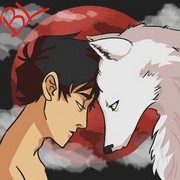
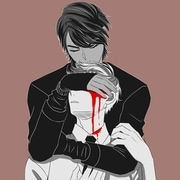
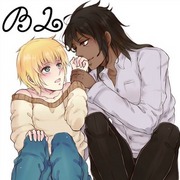

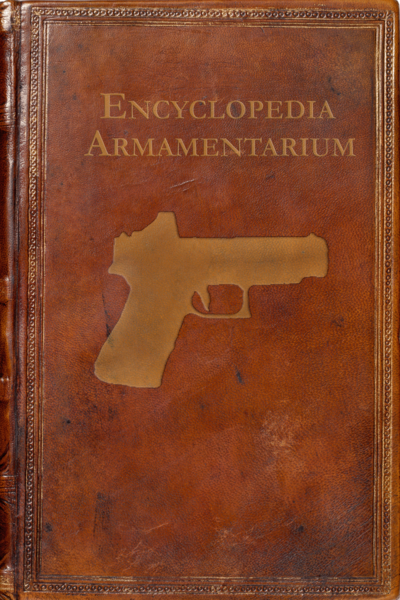
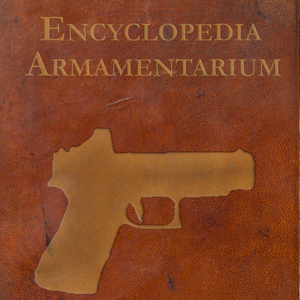
Comments (2)
See all